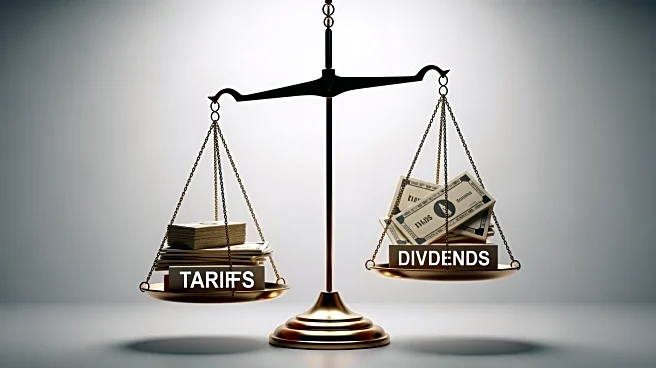What's Happening?
The U.S. national debt has reached $38 trillion, exceeding 120% of annual economic output, prompting warnings from economists and historians. The Peter G. Peterson Foundation published essays analyzing
the risks to U.S. economic strength and global leadership. Experts argue that the nation is operating under a dangerous fiscal gamble, with annual debt servicing costs surpassing defense spending. The debt crisis is exacerbated by political polarization, hindering fiscal consolidation. Economists highlight the lack of favorable conditions for debt reduction seen in past eras, such as post-World War II and the 1990s.
Why It's Important?
The mounting national debt poses a direct threat to U.S. security and economic stability. High debt servicing costs limit funds available for defense and domestic spending, creating a crowding-out effect. Political polarization complicates efforts to address the debt, with entitlement programs protected and revenue increases as the most viable solution. The debt crisis undermines the U.S. dollar's dominance and raises concerns about political risk in sovereign bond markets. The situation threatens the rules-based international order, impacting global financial stability and U.S. leadership.
Beyond the Headlines
The debt crisis is characterized as a slow-motion threat, challenging democratic governments to respond effectively. The erosion of institutional integrity and potential political interference in economic data collection further undermine confidence in U.S. financial markets. The loss of credibility in bond markets could lead to sudden economic consequences, affecting interest rates and everyday Americans. The situation is likened to forgoing insurance, highlighting the need for proactive measures to prevent a financial crisis.











